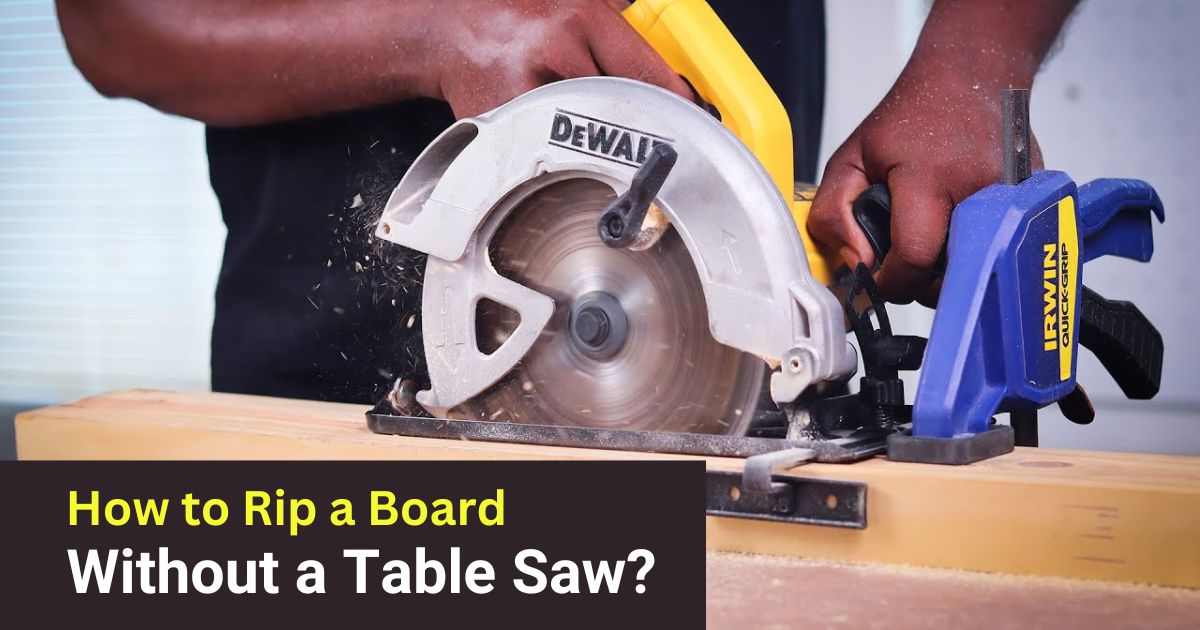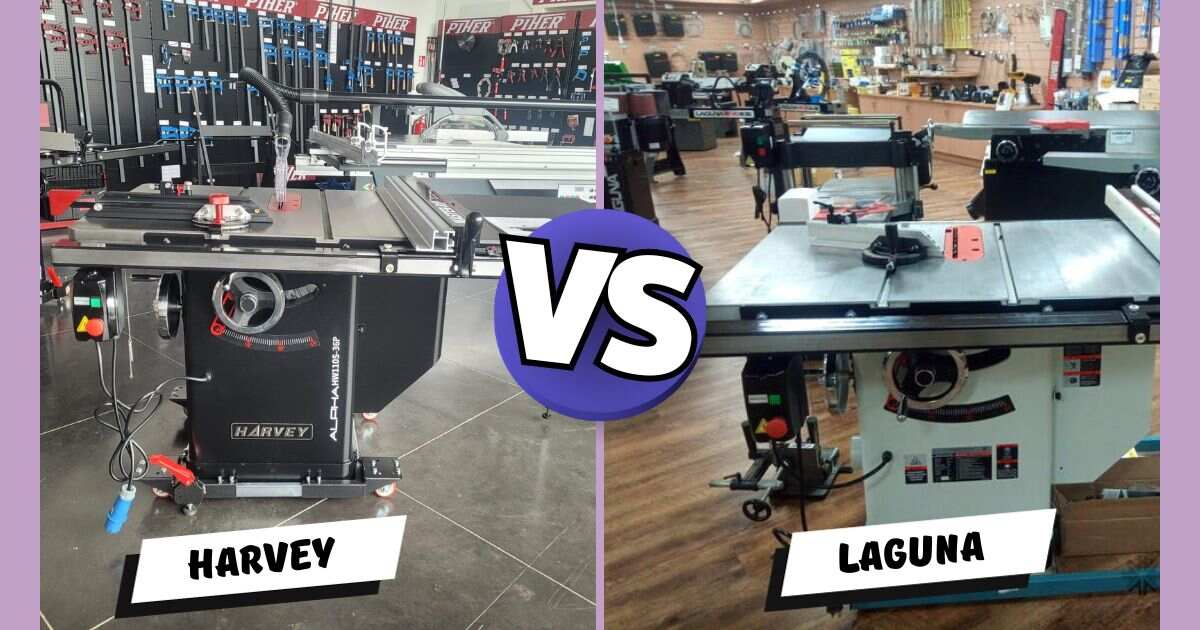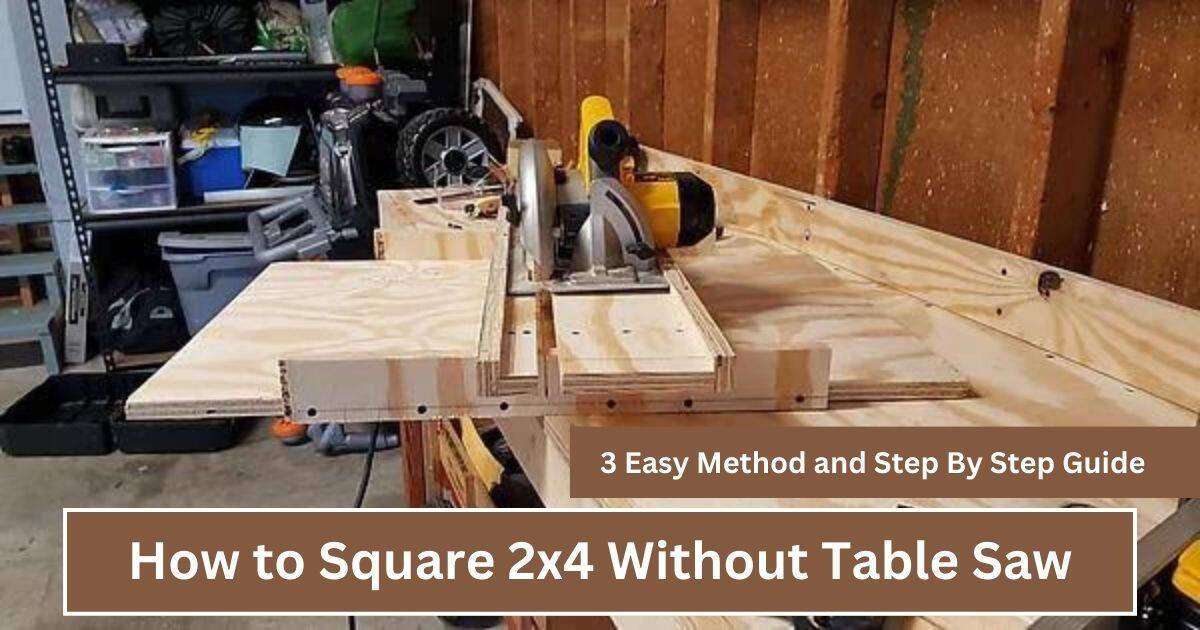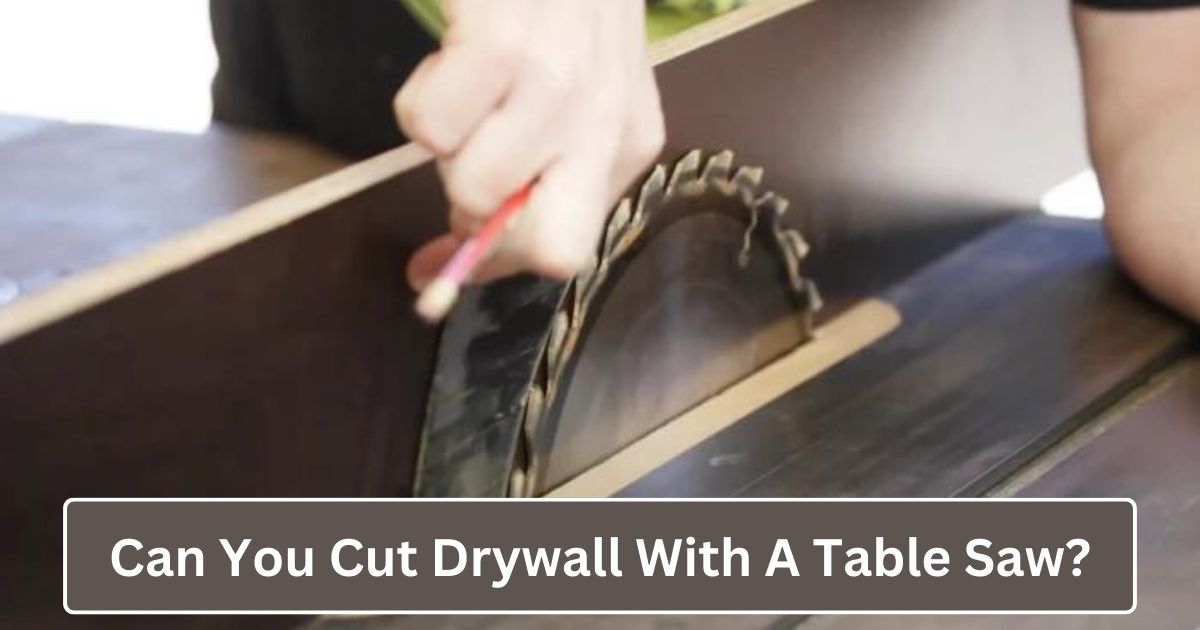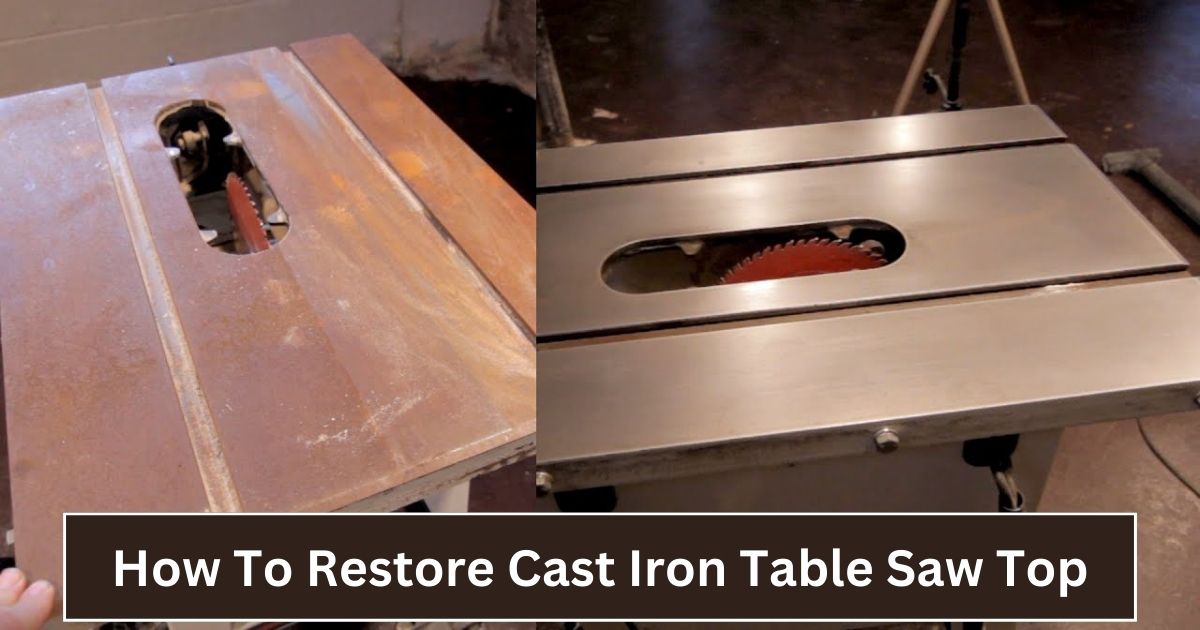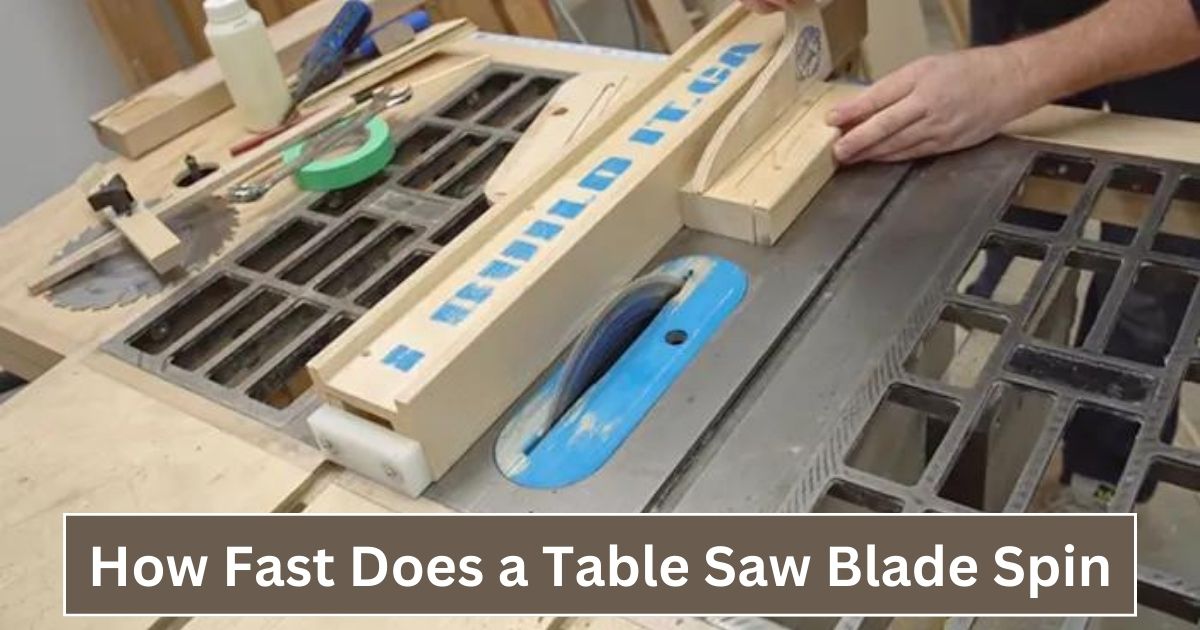Within the realm of woodworking, there are a select few pieces of equipment that are regarded as indispensable, and one of these is a table saw.
If, on the other hand, you do not have access to such a tool or are unable to afford it, there are still other ways to accomplish the task at hand. The purpose of this article is to demonstrate how to rip a board without a table saw, by utilizing general tools and supplies. Have a fun time while remaining safe.
Read More: How To Square 2×4 Without Table Saw
Is it Possible to Rip Wood Without a Table Saw?
Yes, you don’t need a table saw to rip wood. Still, keep in mind that this isn’t always the best or most efficient choice, and it’s for sure not the healthiest. A circle saw, jigsaw, or handsaw can all be used to rip wood. Don’t worry if you don’t have a table saw.
None of these ways are better than using a table saw, though, because they are slower, harder, and less safe. We suggest that you use a table saw to rip wood whenever you can. Table saws are made to do this job, so they will give you the best results in terms of speed, accuracy, and safety.
A Step-by-Step Guide on How to Rip a Board Without a Table Saw:
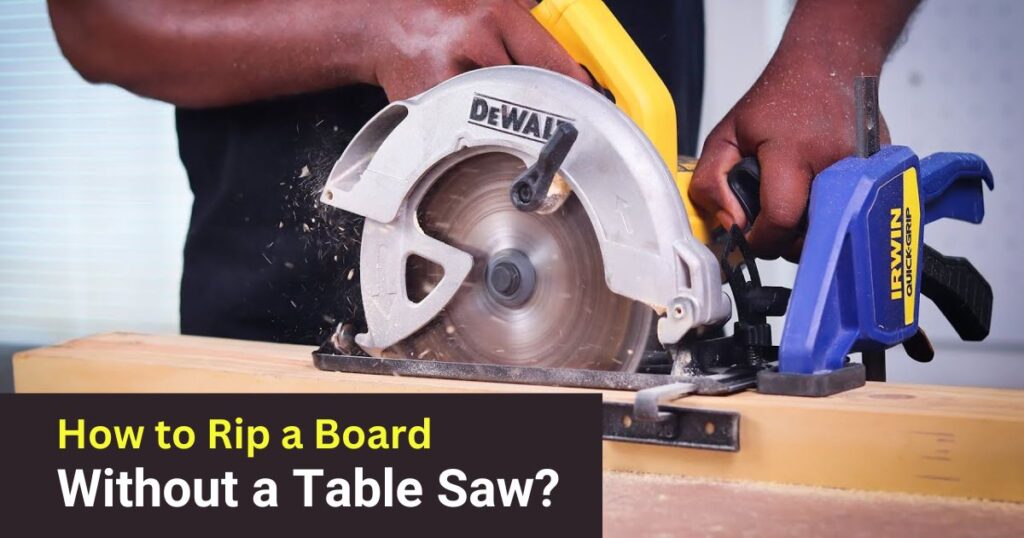
Step 1) Find the Cut Line and Mark It:
Step one is to find the cut line and mark it. You’ll need a straight edge or chalk line and a tape measure for this. The next step is to find the board’s width and then move that number to the other side of the board. Set the ruler on the board and use a straight edge or chalk line to draw a line across it.
Step 2) Put the Board Away:
After that, you need to keep the board in place. You can clamp it to a table or work area to do this. Before you move on to the next step, make sure the board is still in place. If it’s not, it could slip while cutting and hurt someone very badly.
Step 3) Cut Along the Line:
After securing the board well, you can begin cutting. Set the circle saw’s blade to the width and depth you want, then follow the line you made in the first step. Make sure the blade on your jigsaw is long enough to cut through the whole length of the board.
Then, carefully cut along the line, making sure not to go off track. You’ll have to make several cuts with a handsaw to get through the whole thickness of the board. The first cut should be pretty small. With each pass, make the cut deeper.
Step 4) Smooth the Edge:
Once the board is cut, you’ll need to sand the edge to make it smooth. Change the grit of the sandpaper from coarse to fine until the edge is smooth.
Keep in mind that this isn’t always the best or fastest way to do things, but it can be done if you don’t have a table saw. When working with power tools, you should always be careful and wear safety glasses.
Step 5) Finishing up:
Once you’ve cut and smoothed the board, it’s time to finish. Take the clamps off and clean up any sawdust or other mess. After that, you can use your board. Repeat the steps above if you need to rip more than one board.
Some Easy Ways – How to Rip Wood Without a Table Saw:

1) Use a Circular Saw:
A circular saw is the best tool for ripping a board when you don’t have a table saw. This method is pretty easy, and you only need one tool to do it. Also, circular saws are easy to find, which makes them a good choice if you don’t have a table saw.
2) Use a Jigsaw:
One more choice is to use a jigsaw. While it’s not as easy to use as a circle saw, this tool can still get the job done. You need to make sure that the blade on your jigsaw is long enough to cut through the whole board.
Also, use a guide to make sure your cuts are straight. If you don’t have a jigsaw, you can also use a handsaw. It will take longer with this choice, but it can still work if you wait.
3) Cut with a Chisel:
Not having any power tools? You can still rip a board with a knife. You can use this method if you have no other choice, but it is harder and takes more time. Before you use a knife, you need to mark the board where you want to cut.
Then, hit the chisel with a hammer to make a groove in the wood along the line you cut. This will keep the groove deeper until you’ve cut through the board. You should not use this method if you are in a hurry because it takes a lot of time and care.
4) Use a Wood Ripper:
Someone may be able to help you if you can’t find a saw or don’t have any power tools. This is a hand tool that you can get at most hardware shops. It looks like a small saw, but the teeth are much smaller.
Put the board down on a work surface and then use a wood knife. Then, put the ripper’s blade against the board and begin cutting. Like when you use a hand saw, you should cut with the blade straight across from the wood.
5) Use Clamps:
If you don’t have a table saw, don’t worry. Clamps will still let you rip boards. First, measure and mark the spot on the board where you want to cut. Then, clamp the board to a flat surface so the line you drew hangs over the edge.
First, cut the board with a saw. Then, take it out of the clamps and sand or file down any rough edges. Because it can be hard to keep the board straight for bigger cuts, this method works best for small cuts.
6) Use a Chalk Line or Straight Edge:
A straight edge or chalk line can help you make a long, straight cut. Put the board you’re going to rip in place with clamps first. Then, draw a line on the board with a pencil where you want to cut.
Next, line up the chalk line or straight edge with the cut line on the board. Last, cut it with a jigsaw or tool knife that is very sharp.
7) Set up a Router:
If you need to make a careful, straight cut, you can use a cutter. First, put the board down on your work area and clamp it down. Then, use a guide to move the board and cutter along the line. This is a great way to make cuts that are clean and exact.
8) Put on a Sawzall:
A Sawzall is another tool that can be used to make clean, accurate cuts. It works like a jigsaw, but it’s much stronger and can make cuts that are straighter and cleaner.
Before you use a Sawzall, you need to clamp the board you want to cut to a stable surface. Next, draw a straight line on the board where you want to cut it. Next, make sure the Sawzall’s blade is the right width for the job. Finally, turn on the tool and move it slowly along the line you drew on the board.
9) Use a Handplane:
You can smooth out the edges of the board with a hand plane after it has been cut. You don’t have to do this step, but it will make your ripped board look more professional.
Set the blade to the depth you want before you start to use a hand plane. Then, put the blade of the plane on the board with your stronger hand and push forward to cut.
Do this again and again until the whole board is smooth. You don’t need a hand plane to smooth the edges of your board. You can use a sanding block or an electric sander instead.
How to Hand Rip a Board:
To rip a board by hand, you need to cut it lengthwise along the grain. This can be done with a saw or a knife. Cut a board with a saw. First, use a pencil or marking knife to mark the line where you want to cut.
Then, use clamps to hold the board to a desk or any other stable surface. With both hands, hold the saw and line up the blade with the cutting line. Make sure the blade is straight across from the board.
As you begin to saw, move the blade slowly back and forth while keeping even pressure on it until you reach the end of the board. You should use a saw with “rip teeth,” which means the teeth are filed to cut through the fibers of the wood.
The steps are a little different if you’re using a knife. Make a line where you want to cut first. Then, use a marking knife to make a small groove along the line.
Put the chisel into the groove and lightly hit it with a hammer. Move the chisel along the board’s length until the cut is ready. Hand-ripping works best when you keep your hand steady and apply the same amount of pressure throughout the cutting process.
Bottom Line:
This article tells you how to rip a board without a table saw, step by step. That’s all there is to it. You no longer need a table saw to rip boards. Just make sure you do it right and take your time. When you use power tools, safety is always important, so please be careful and take all the right steps. Now go rip some boards!
FAQs about How to Rip a Board Without a Table Saw
What Tool is Used to Rip Wood?
The best saw blade for splitting wood is a rip blade. This blade is specifically designed for cutting through wood fibers, so it will effortlessly cut through hardwood while leaving a clean edge. Rip blades typically feature 10 to 40 flat-topped (FT) teeth, which is a small number yet allows the blade to go fast through the grain.
What is the Best Rip-Cutting Tool?
Manual circular saws, miter saws, hand saws, and reciprocating saws all have their uses and can make an incredible range of cuts. A table saw, on the other hand, is the greatest tool for making a length-wise rip cut in wood while producing cuts that appear like factory edges.
Are Table Saws Used by Carpenters?
Jobsite and portable table saws. Because they are lightweight and portable, portable table saws are ideal for craftsmen and other individuals who spend the majority of their time on the job site. Smaller in size, portable table saws perform the same fundamental function as their larger counterparts.
Related Posts:
